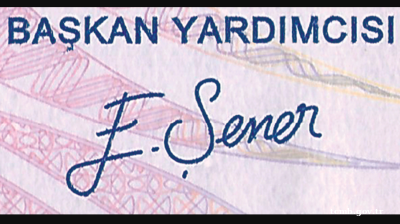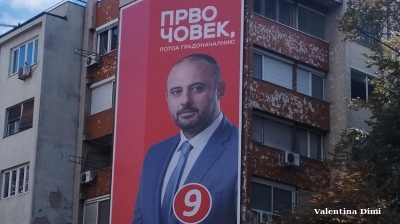Politics
North Macedonia is facing another year of political uncertainty after Bulgaria again vetoed the start of EU accession talks and the ruling Social Democratic Union of Macedonia (SDSM) suffered a huge loss in the October local elections, when most of the mayoral positions were won by the opposition conservative VMRO-DPMNE.
Following the election defeat, SDSM leader and Prime Minister Zoran Zaev announced his resignation from both positions. He was replaced as prime minister and leader of the ruling party by Dimitar Kovacevski, former deputy finance minister.
Kovacevski is not very well known to the public. However, his party colleagues described him as an energetic and knowledgeable man that will be able to deal with the consequences of the COVID-19 pandemic and the energy crisis.
Meanwhile, VMRO-DPMNE, encouraged by its local election victory, called for snap general elections as quickly as possible. On December 12, the party re-elected Hristijan Mickoski as leader, and he announced a “new doctrine”, a new policy and a concept of unity as a basis of “common patriotism”.
Zaev excluded the possibility of snap elections as demanded by the opposition, saying that the next election will be held at the end of the current parliamentary term in 2024.
However, local experts do not exclude the possibility of early general elections possibly in spring 2022.
Political analyst Aleksandar Krzalovski said snap elections in the spring, more specifically between April and June, are “virtually inevitable”.
North Macedonia became a Nato member in March 2020, and now its priority is to launch the EU accession talks, after being a candidate country since 2005.
Bulgaria vetoed the start of EU accession talks with North Macedonia at the end of 2020 due to history and language issues, which also stalled the EU integration process of Albania as the two countries were coupled in the process. Following the two unsuccessful general elections in April and July, after the third elections in November, Bulgaria has now formed a new government whose main priority is to solve the issue with Skopje.
However, Bulgaria still plans to adhere to the parliament’s declaration from October 10, 2019 on blocking the start of EU talks with North Macedonia until the issues are resolved. Meanwhile, Sofia supports the separation of Albania from North Macedonia in the EU membership process and would back the start of EU accession talks with Tirana.
At the same time, Skopje said it was willing to respond to all requests from Sofia and has already sent its answers to Bulgaria’s 5+1 plan that aims to resolve the situation.
Slovenian ambassador to Skopje Milan Predan, whose country was the holder of the EU presidency until the end of 2021, was optimistic about a possible solution between North Macedonia and Bulgaria that will unblock Skopje’s EU integration process by the end of the 2021 or possibly in January.
US Deputy Assistant Secretary in charge of the Western Balkans Gabriel Escobar expressed his strong support in December for the quick EU integration of North Macedonia.
Macroeconomy
GDP growth: North Macedonia’s government projected economic growth of 4.6% for 2022, with gross investment increasing by 8.5%, following projected growth of 3.9% in 2021. The central bank expects GDP growth for both 2021 and 2022 of 3.9%.
In the medium term, the central bank projected further recovery of about 4% per year. This growth dynamic will enable compensation of the economic losses from the coronacrisis and exceed the pre-pandemic level during 2022.
However, the central bank said there are risks related primarily with the further development of the COVID-19 pandemic and the appearance of new variants, which requires careful monitoring of the economic developments. The implementation of structural reforms is extremely important, because they are a prerequisite for sustainable and higher economic growth, the central bank said.
The International Monetary Fund (IMF) upgraded its forecast for North Macedonia’s GDP growth of 4.2% for 2022, up by 0.2 pp from the previous forecast and sees a growth of 3.6% in 2026.
According to the European Commission, North Macedonia’s economic recovery is making good progress, as both domestic and foreign demand are strengthening. The upswing is expected to gradually solidify in 2022 and 2023, based on a further firming of private consumption and foreign demand.
According to the Fitch rating agency, the negative outlook reflects moderating but still material downside risks to the growth outlook, including the evolution of the pandemic, and path of public debt, together with uncertainty regarding the consistency of the government's fiscal consolidation strategy.
External environment: The current account deficit of the country is forecast at 2.1% of GDP both in 2021 and 2022, following a gap of 3.5% of GDP in 2020, according to the IMF.
According to the central bank, the current account deficit would still be moderate, but at a slightly higher level than 2020 (3.8% of GDP), and in the medium term would be around 2% of GDP, similar to the pre-crisis level. The widening of the deficit is primarily a reflection of the higher trade deficit with rising world food and energy prices, a temporary stagnation in supply chains that is slowing down exports, and a gradual recovery in domestic demand. These effects are largely offset by faster recovery of private transfers as well as better net exports of services. The current account deficit, as in the pre-crisis period, will be fully financed by the inflows in the financial account, which will enable further growth of foreign reserves in the medium term.
Fitch expects the current account deficit to equal 3.4% of GDP in 2021, as stronger domestic demand recovery and higher energy imports will be partly balanced by a strong export rebound and continued strength in remittances. The deficit will ease to 3% of GDP by 2023 and expects net FDI to recover to 3.1% of GDP by 2022, fully financing the current account deficit.
Fitch said that the EU accession process of North Macedonia helps to anchor policy and support exports and FDI inflows, adding that these factors are balanced against others, including the economy's small size and high exposure to exchange rate risk.
The government in its 2022 budget projected final consumption to increase by 3.1% and exports by 8.3%.
Inflation and monetary policy: In terms of inflation, the central bank raised the projection to 3.1% for 2021 due to the supply-side factors, which are caused mainly due to rising world commodity prices and disruption in global supply chains. For 2022, the central bank expects the inflation rate to slow down to 2.4%.
The government expects inflation rate to stabilise at 2.4% in 2022, with price pressures, due to the uncertainty related to energy prices of the primary products on world stock exchanges, expected to slow down in the second quarter of 2022.
The IMF forecasts North Macedonia to post an average annual inflation of 3.1% in 2021 that will slow down to 2.2% in 2022. In 2020, the country posted inflation of 1.2%.
In December, North Macedonia’s government decided to freeze the prices of some basic food products due to the rising inflation. The decision will be valid until January 31, 2022, with the possibility of extension depending on the market conditions.
The prices cannot exceed the level of prices on these products applied on December 1, 2021.
In 2021, the inflation started to increase rapidly since April this year and stabilised for a while only in June.
Industrial production: North Macedonia's industrial output declined for the fourth consecutive month in October 2021 by an annual 6.5%, narrowing from the 8% decrease in the previous month.
Industrial production fell from July to October 2021 after four months of growth. The biggest annual increase in industrial output was in April 2022, when it jumped 46.1%, due to the low base effect.
North Macedonia’s domestic industrial producer price index (PPI) increased by an annual 13.7% in October, speeding up from a 10.6% y/y growth in the previous month
The annual growth was driven by the PPI increase in all sectors. The PPI started to grow rapidly since February 2021. Prices in the key manufacturing sector rose by 9.8% year on year in October, in the mining sector prices jumped by 13.7% y/y and soared by 33.5% in the utilities sector.
In the first ten months, the PPI was higher by 7.2%.
Real economy
Retail: North Macedonia’s retail sales went up by a real 7.2% year on year in October, slowing down from a 8.7% y/y increase a month before. In 2021 the biggest annual increase of retail sales was recorded in April, of 23%, following the lockdown in the same month of 2020.
According to media reports, French sporting goods retailer Decathlon is expected to enter the market in North Macedonia. Decathlon is scanning the market and selecting locations for stores, which will be followed by the second phase, which is the construction of facilities. Its entry to the Macedonian market is expected within three years at the latest.
At the end of October Skopje’s East Gate Mall, a €350mn project developed by Albanian Balfin group, was officially opened on October 29, 2021 and is one of the biggest malls in the region.
The three mixed-use projects in Skopje, Skopje East Gate, Cevahir Sky City and Diamond of Skopje, will deliver 120,000 sqm of retail gross leasable area (GLA) by the end of 2022, according to Cushman & Wakefield|FORTONMKA.
“We expect in the foreseen future investor focus in North Macedonia to be tenant driven, with emphasis on retail parks as a cost-effective opportunity not only in Skopje, but in the secondary cities as well. “The lack of modern retail space in Kumanovo, Gostivar, Bitola, Prilep, Shtip and Tetovo presents great investment potential for developers. High demand for low-cost retail spaces, as well as their successful performance during the pandemic period, contributed to greater interest in commercial real estate developments in retail parks,” according to Cushman & Wakefield|FORTONMKA .
Banks: Initial data on total deposits and loans for October 2021 (the latest available) show their further solid annual growth, according to the central bank. This favourable trend is expected to continue, with an average annual growth of deposits and loans of 7.4% and 7%, respectively, in the period 2021-2023.
According to the central bank, during the crisis, the stability of the banking system was extremely important, as it provided support for the economy, and it is expected to support economic growth in the next period, given the banks’ resilience. In particular, credit support to the economy remains solid, with a growth of around 7% in 2021 and gradually accelerating to around 8% in the medium term. The expectations for the movement of deposits are similar.
According to Fitch, North Macedonia’s banking sector has maintained strong fundamentals despite the pandemic shock and the phasing out of financial sector relief measures. It is adequately capitalised with a total capital ratio of 17.3% and common equity Tier 1 ratio of 15.9% at mid-2021 and profitability (return on average equity of 12.6%) as well as low non-performing loans (3.4%), despite almost complete withdrawal of the payment moratorium. Deposit dollarisation remains relatively high at 42%, but the pandemic shock has not reversed the declining trend over the past decade. Domestic credit availability, continued wage growth, albeit at a more moderate pace, and public investment will support domestic demand.
Industry: North Macedonia's industrial output declined for the fourth consecutive month in October 2021 by an annual 6.5%, narrowing from the 8% decrease in the previous month.
Industrial production fell from July to October 2021 after four months of growth. The biggest annual increase in industrial output this year was in April, when it jumped 46.1%, due to the low base effect.
Despite this, companies operating in North Macedonia’s free economic zones achieved record high exports in 2021 of about €3bn, which is 15% more compared to 2020, and 6.5% more than in pre-pandemic 2019, the head of the directorate of the free economic zones. The biggest of the zones is Bunardzik, close to Skopje, where one of the major exporters in the country, UK chemicals company Johnson Matthey, is located.
South Korean car parts manufacturer Almac together with US-based automotive supplier Dura Automotive Systems will invest €30mn in a production capacity in the free industrial zone near Skopje. The start of production is planned for the coming year.
Also in the automotive sector, German automotive company Fritz Draexlmaier said it is issuing a €350mn ESG-linked Schuldschein to back investments in North Macedonia as well as Romania and Moldova. The financing will go towards e-mobility linked investments in the three countries. In North Macedonia, the company has been operating a factory in Kavadarci since 2012.
Meanwhile, local battery maker Tab-Mak is planning a new investment cycle worth €30mn to increase production of starter batteries. 97% of Tab-Mak's production is sold on foreign markets.
Energy & power: North Macedonia’s government on December 1 approved the decision to extend the state of crisis in the energy sector by six months until June 9, 2022.
The country initially declared a state of crisis in the energy sector for a period of 30 days on November 9 to stabilise the situation in the electricity market amid soaring prices on international markets. The only measure arising from this decision is to inject funds into the state-run energy companies, MEPSO and ESM, it was said at the time. No restrictive measures were planned.
The extension of the state of crisis in the energy sector aims to ensure continuity in the implementation of measures and activities to overcome the situation with electricity supply.
The energy companies were set to receive €65mn from the state for electricity imports and to maintain stable supply.
Meanwhile, the power producer ESM has called two tenders to supply coal to increase production in North Macedonia's thermal power plants.
In 2021 North Macedonia relied partly on power imports, due to lower domestic production.
Officials said that the price of electricity in North Macedonia will not increase by more than 10% as of January 2022.
The authorities in North Macedonia are committed to switching to clean energy sources and gradually reducing the use of coal. However, due to the lack of electricity, North Macedonia started negotiations to import 3mn tonnes of coal from neighbouring Kosovo for its thermal power plants.
The government announced that the construction of the Stipion solar park, a €270mn strategic investment by the French company Akuo Energy SAS, will start in 2022 near North Macedonia’s eastern town of Stip.
In December 2021, North Macedonia’s government announced other two solar power projects worth a total of €116mn to be strategic investments.
Construction: North Macedonia’s Construction Cost Index (CCI) for new residential buildings jumped by 16.7% y/y in the third quarter of 2021, accelerating from a 12.5% y/y increase in the previous quarter. The higher costs also increased the prices in the real estate sector lately.
The main constraints in the construction industry include increased material costs, low demand, lack of competent staff as well as competition in the sector.
Major Sectors: Major sectors in North Macedonia’s economy include manufacturing — with an emphasis on automotive components and textiles and clothing, agriculture and food processing, energy metals and mining and ICT.
The export-oriented manufacturing sector is highly dependent on external demand. Fitch said that still uncertain evolution of the pandemic in North Macedonia and key trading partners as well as global supply disruptions impacting the car industry could represent challenges to the recovery.
Budget and debt
North Macedonia’s government set the 2022 budget deficit at 4.3% of the country’s GDP, which is 2.2 percentage points lower than last year's budget gap. The budget will be development oriented.
Budget revenues for 2022 are planned at MKD238.9bn (€3.9bn), which is 7.4% more than a year earlier, while total costs would be 1.4% higher y/y at MKD272.4bn, making a deficit of €33.5bn.
Capital investments are set at MKD37.8bn, which is about 27% more compared to 2021.
Economic growth of over 5% per year, investments in the public and private sector of €12bn and the creation of 156,000 new jobs are included in the Plan for Accelerated Economic Growth for the period 2022-2026 adopted by North Macedonia’s government in October.
The plan also foresees fiscal consolidation and maintaining stable public debt.
The main feature of the draft budget for 2022 is that the deficit will only be used to support a significant part of the capital investments.
The funds are intended for speeding up works on implementation of road and railway infrastructure, and energy and communal infrastructure projects, as well as capital investments to improve the conditions in the health, education, social system, agriculture, culture, sports, environmental protection and the judiciary.
In order to respond to the still present challenges from the COVID-19 pandemic, more funds are provided in the health sector and are planned at the level of MKD7.4bn.
Fitch said that the government's 2022 budget proposal is in line with the 2022-2026 fiscal strategy, which projects the budget deficit declining to 4.3% and 3.5% of GDP in 2022-2023, before reaching 2.2% of GDP by 2026. The risks to the government strategy are derived from lower growth than the government's forecast (averaging 5.3% between 2022-2026) and failure to contain current spending.
Fitch forecasts the government deficit to decline to 5% of GDP in 2022 and 4.1% in 2023, above the 4% and 3.5% forecast for the 'BB' median. The rating agency’s forecast assumes lower revenue growth in line with its growth forecast, as well as under-execution in planned public investment. The government expects public investment to increase from 2.4% of GDP in 2020 to 6% by 2026, a challenging task despite the recent improvements.
Markets
The total stock exchange turnover in the first half of 2021 was around €87mn, which is a decrease of 8% compared to the same period in 2020. It is important to emphasise that in March and April 2020 the market observed extremely high stock turnover as a result of the COVID-19 pandemic. On the other hand, 2021 was marked by a large increase in bond trading of 159%. Also, the turnover from block transactions increased by 30% y/y.
The MBI10 index, which measures the general level of prices of the 10 most liquid shares on the Macedonian Stock Exchange (MSE), starting from 2016, has registered continuous annual growth (16.45% in 2016, 18.92% in 2017, 36.64% in 2018, 34.01% in 2019 and 1.20% in 2020).
During the first half of 2021, the MBI10 index, with the exception of February, continued to grow continuously and compared to the end of 2020, on June 30, 2021 it was 5,281.14 index points, and recorded a double-digit increase of 12.25%.
In the first half of 2021, there was an upward movement in the prices of all shares that are components of the MBI10 index.
Companies from the pharmaceutical, telecommunications and banking sectors were the least affected. The companies from the sector of tourism, catering and construction that are listed on the MSE, were the most affected by the crisis, the bourse director Ivan Steriev said.
North Macedonia is rated ‘BB-’ with stable outlook and ‘BB+’ with negative outlook by Fitch.
Features

Sri Lanka’s economic escape
Sri Lanka’s recovery over the past year reads like a narrow escape rendered into a cautious, albeit unfinished success story.

BEYOND THE BOSPORUS: Investigators feel collar of former Turkish central bank deputy governor
Regime gangs continue to hustle for gains. Some Erdoganist businessmen among the losers.

Journalist beaten to death in Istanbul as security conditions in Turkey rapidly deteriorate
Publisher, meanwhile, is shot in leg. Reporters regularly experience violence, judicial harassment and media lynching.

Agentic AI becomes South Korea’s next big tech battleground
As countries race to define their roles in the AI era, South Korea's tech giants are now embracing “agentic AI”, a next-generation form of AI that acts autonomously to complete goals, not just respond to commands.




